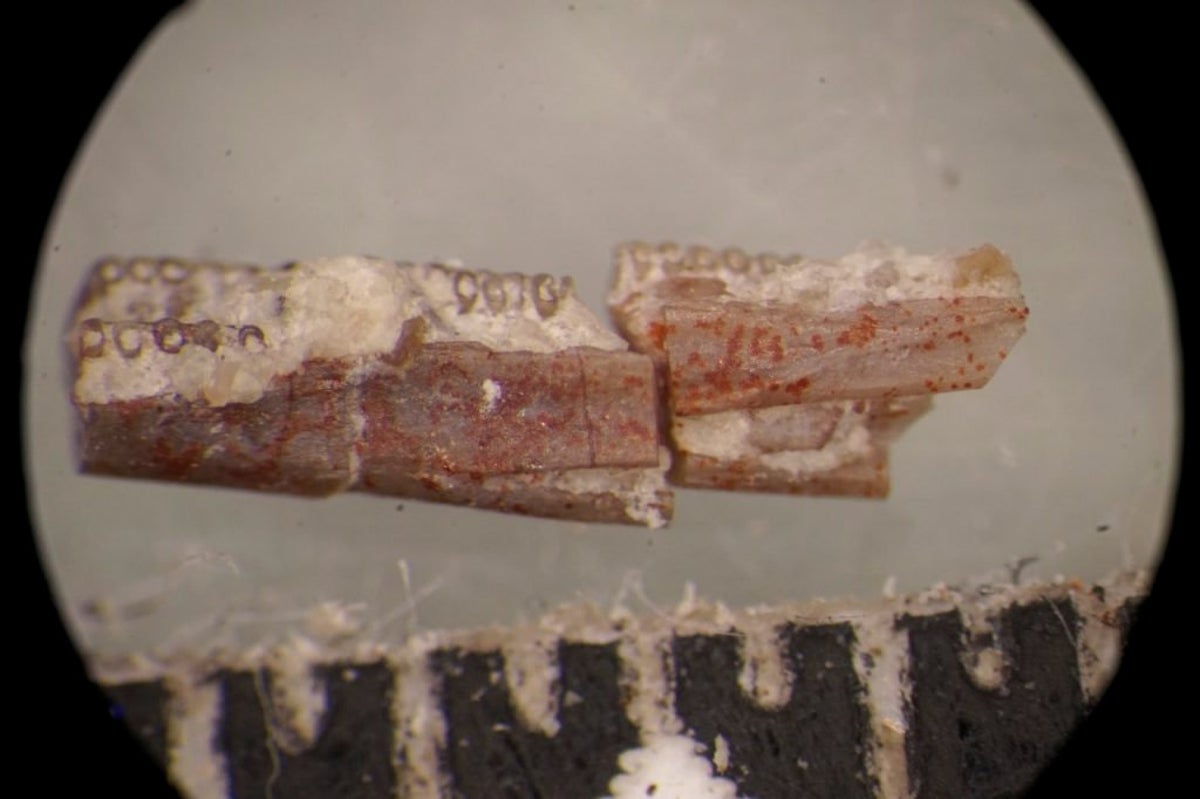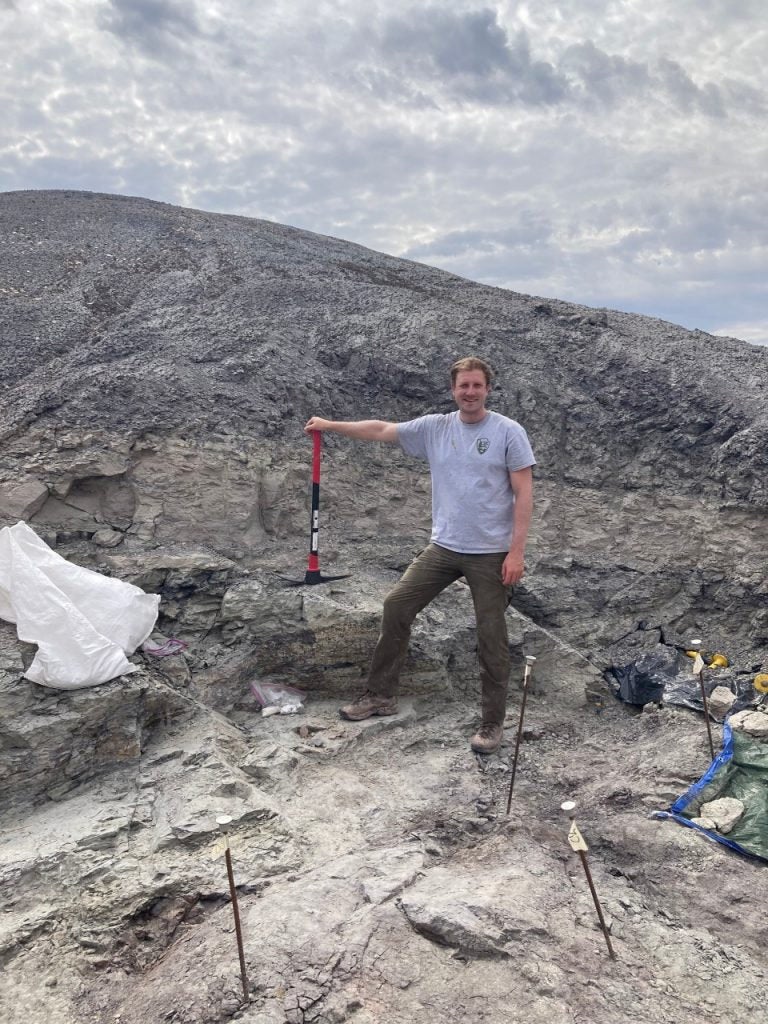
The world’s first ‘worm’ dating back 220 million years has been unearthed in Arizona.
It’s a ‘missing link’ in evolution that sheds fresh light on the origins of amphibians.
Named Funcusvermis gilmorei, it lived at the beginning of the age of the dinosaurs.
The primitive creepy-crawly was identified from its tiny jaws and teeth - which remarkably survived fossilisation.
While its Latin name refers to it as a ‘funky worm’, it actually belongs to a group called caecilians, which also include frogs and salamanders.
Ben Kligman, a doctoral student at Virginia Tech who led the dig at Petrified Forest National Park, said: “The discovery of the oldest caecilian fossils highlights the crucial nature of new fossil evidence.
“Many of the biggest outstanding questions in palaeontology and evolution cannot be resolved without fossils like this.”
Mr Kligman, who previously discovered a 220-million-year-old species of cynodont or stem-mammal, a precursor of modern-day mammals added: “Fossil caecilians are extraordinarily rare and they are found accidentally when palaeontologists are searching for the fossils of other more common animals.
“Our discovery of one was totally unexpected and it transformed the trajectory of my scientific interests.”
He previously discovered a species of cynodont or stem-mammal - a precursor of modern-day mammals - from the same period.
Funcusvermis was found in a layer known as the Chinle Formation. The rocks were positioned near the equator at the time - in the centre of the supercontinent Pangaea.

The region was just as hot as today - but much more humid.
Mr Kligman said: “Seeing the first jaw under the microscope - with its distinctive double row of teeth - sent chills down my back.
“We immediately knew it was a caecilian - the oldest caecilian fossil ever found - and a once-in-a-lifetime discovery.”
It fills an 87 million-year gap in the fossil record - which hid the early evolutionary history of caecilians.
Scientists have debated over the relationships of caecilians to their amphibian relatives for decades.
Mr Kligman said: “Funcusvermis extends the humid equatorial pattern of occurrence seen in all known fossil and living caecilians.
“It suggests the biogeographic history of caecilians has been guided by restriction to these ecological settings.
“It was likely due to physiological constraints linked to humidity and constrained by the drift of continental plates into and out of the humid-equatorial zone after the fragmentation of Pangaea.”

Modern caecilians are limbless amphibians with cylindrical bodies.
A compact, bullet-shaped skull helps them burrow in leaf litter or soil searching for prey such as worms and insects.
They are now only found in South and Central America, Africa and southern Asia.
An underground existence has made studying them difficult for scientists.
Mr Kligman quipped: “They are like an eyeless sock puppet - with the body of a worm.”
Funcusvermis even shares skeletal features with early frog and salamanders.
It adds to evidence of a common ancestor. Funcusvermis also resembles dissorophoid temnospondyls - an ancient group of amphibians.
Mr Kligman said: “Unlike living caecilians, Funcusvermis lacks many adaptations associated with burrowing underground, indicating a slower acquisition of features associated with an underground lifestyle in the early stages of caecilian evolution.”
Many of the biggest outstanding questions in palaeontology and evolution cannot be resolved without fossils like this
Funcusvermis was named after “Funky Worm” from US 70s band Ohio Players’ album Pleasure.
The song was often played while excavating fossils at Thunderstorm Ridge.
‘Funcus’ is derived the English word Funky for the upbeat, rhythmic form of dance music while ‘vermis’ is Latin for worm.
Lead palaeontologist Adam Marsh said: “As the eponymous song says, it’s the funkiest worm in the world.”
The lower jaws of at least 70 individuals of Funcusvermis have since been recovered as of last summer - making the area the most abundant fossil caecilian-producing bonebed ever discovered.
Only a handful of disarticulated bones have been found including upper and lower jaws, a vertebra and part of a hind-limb.
Without complete skeletons, the body length of Funcusvermis cannot be exactly determined.
But inferences from isolated elements such as the lower jaw being less than a quarter of an inch long, indicate Funcusvermis was a very small animal.
Mr Kligman said: “Since its discovery in 2017, the Thunderstorm Ridge site has produced a diverse assemblage of over 60 animals ranging from freshwater sharks to dinosaurs.
“Several other new species discovered at this site have been recently described.”
Many other new species from this site are currently under study and will be published in upcoming years.”
Funcusvermis is described in the journal Nature.
This article was amended on January 27 2023 to make it clear that Funcusvermis gilmorei was not a true worm.







